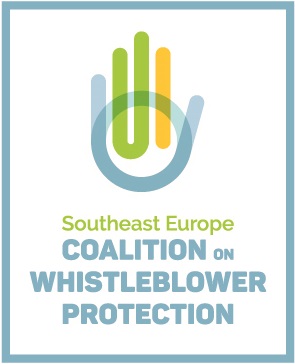author: Jasmina Jovanovska
Kidney patients become infected with Hepatitis C on dialysis. Both patients and
nephrologists confirm this and they locate the reason in non implementation of the standards
for safe dialysis in practice, as well as in the fact that in the state no one properly controls the
safety of dialysis patients. Economic analysts say that dialysis is carried out in substandard
conditions due to the fact that the centers do not have enough money for dialysis and the one
they receive is not spent as intended.
The data from the dialysis centers about patients infected with Hepatitis C are striking. In the
civic association of patients with kidneys diseases “Nefron”, they say that there are centers
where the infection is present within 30 per cent of the patients, but there are also centers
where more than one half of the patients are infected with Hepatitis C. Most of the experts
say that the infection is transmitted because the machines are not always completely sterilized
as imposed by the procedures, and they save on gloves, too, so even nurses can transmit the
infection. “The same nurse works with both patients infected with Hepatitis C and those who
are not”, complains Dushko Gjorgjievski, vice president of “Nefron” on the World Kidney
Day 10th March. He warns that patients who come to the dialysis centers, due to the physical
non-separation, are directly exposed to Hepatitis B and C infection.
Dialysis places
Experts locate the problem of spreading Hepatitis C among patients on dialysis in the lack of
sufficient dialyses places. The infection develops more, adds the nephrologist Ninoslav
Ivanovski, as health workers cannot always select machines that only infected patients can
use. “So, if there are not enough places for dialysis, it happens that healthy patients are placed
on machines on which only positive patients are dialyzed”, points out Dr Ivanovski.
According to his estimations, in some centers there is even 90 per cent infection with
Hepatitis C. According to Ivanovski the problem is also in the fact that patients are not
regularly controlled whether they are infected or not as the money for testing is a burden on
centers’ budgets. “Presence of virus in the serum of the patient is not regularly tested and at
the moment the test is only carried out in the Macedonian Academy of Sciences and Arts –
MANU. Dialysis centers do not conduct this test on regular basis as it burdens their budget”,
explains Dr Ivanovski.
Economic analysts say that one of the reasons for spreading the infection is not managing the
money for dialysis as intended. In spite of the fact that the Health Insurance Fund projects
money for amortization in the dialysis price, that is, for buying new machines, so far no
center has bought machines itself. They either receive machines as donation, often secondhand
ones or, the state buys equipment for them, but it rarely happens. At the moment, as
Ljubomir Trpenoski, president of the civic association “Nefron” says, it is necessary to
replace at least 80 machines.
And the managers of the centers justify non-implementation of the dialysis standards with not
having enough money to carry out dialysis, let alone buy machines or expand the center so
that selection of patients could be made.
However, from the Health Insurance Fund (FZO) they are categorical that the price has been
so defined that for each dialysis there are 180 denars for amortization. “When we defined the
reference price for dialysis, all the items had been taken into consideration. The price is 4.885
denars, out of which 180 denars are for depreciation”, says Branko Adzigogov, FZO
spokesperson. However, he admits that so far the Fund has not controlled how the money
from dialysis is spent or if it is spent as intended. “Neither the Fund has insight into how the
money for dialysis is spent as centers are given annual budgets. But with the introduction of
treasury operations of health institutions that is going to start this year, the Fund will certainly
have a better insight into how the money for dialysis is spent as all the money will be defined
for the specific purpose and we will know exactly how much is spent and what for. If
diverted, it will have to be done with approval by the Fund”, explains Adzigogov, FZO
spokesperson.
If money is well managed, realistically, even 45.000 can be collected per year, taking into
consideration that about 200.000 dialyses are done per year. One machine costs about 6.000
to 7.000 Euros, so annually at least seven machines can be bought. And the reality shows that
none has been bought. So economic analysts ask where the money is spent, whether it is
diverted for other needs of the centers.
The national coordinator for dialysis, Dr Aleksandar Shikole admits that with the money
projected for amortization for two years, at least ten machines can be bought. However,
Shikole claims that the Fund never pays to them the amount of money equal to the number of
dialyses carried out during the year, so they are forced to divert the money from dialysis into
drugs and dialysis medical supplies. According to him, it is not about misuse of money as
they have not enough money for basic carrying out dialysis.
However, Shikole thinks that the main problem is not only the money and machines. Four
years ago a strategy was passed to prevent spreading the infection. “Before each dialysis a
chemical sterilization should be carried out that should last even 40 minutes and sometimes
heat sterilization of machines in order to exclude spreading the infection through machines.
Thus the virus is destroyed even to 100 per cent”, says Dr Shikole. However, he does not
know if these measures are carried out in all dialysis centers and to what extent. Dr Shikole
adds that the State Sanitary and Health Inspectorate should control how the dialysis is carried
out.
Weak control
And it is a question whether the State Sanitary and Health Inspectorate even once a year
control the centers, sometimes not at all. “The last control was in December last year.
Findings of most of the centers were good. The rules for safe dialysis are respected, from
disinfection of machines to wearing gloves. “The problem is that it is not possible physically
to separate on dialysis machines those who have Hepatitis C and the ones who are not
infected. So far there is such division only in two centers”, explains Vera Menkova from the
State Sanitary and Health Inspectorate.
However, dialysis patients are skeptical about how often nurses regularly change one use
gloves and whether disinfection measures are taken. “In situations when due to various
reasons dialysis has started late and nurses are in a hurry the two dialysis shifts to end within
regular working hours, instead of 20 minutes, disinfection of machines lasts shorter”, some
patients explain. “We doubt if nurses change their gloves regularly. She was at one patient
and when another one calls her, they do not always change their gloves”, says Gjorgjievski,
vice president of the association “Nefron”.
The national coordinator admits that in the centers on average there are 40 per cent infected
patients with Hepatitis C. However, this per cent is good taking into consideration the fact
that in 1992, when the examinations of this disease started, the per cent of infection was even
90 per cent. However, he is an optimist that things are getting better. Within two years the
clinic was given two corrections of the budget and there will be another one until the end of
the year. “By increasing the budget there will be conditions for enough money to cover
dialyses and still to have money to buy machines”, says Dr Shikole.
It is not only the machines that make the centers; it is also the space as there would be
separation of patients who are positive on Hepatitis C and those who are not infected.
The Ministry of Health assures that there is not any drastic increase of infection with
Hepatitis C within kidney patients. In order to get a real picture from the field, a commission
has been established from representatives of the Ministry and doctors from the Clinic of
Nephrology. However, the commission’s explanation is very contradictory.
“It has been concluded that in every center chemical or heat sterilization of the machines is
obligatorily done after each dialysis. Medical personnel have to change gloves after each
intervention on a patient. If possible, positive patients to be separated from the negative ones
in separate rooms. In any case they are separated on positive or negative machines, with
obligatory sterilization of the machines, they say in the explanation by the Ministry of Health.
After this explanation, in continuation, it is said that there is sterilization everywhere and the
standards for allocating patients with Hepatitis B and Hepatitis C in special rooms are present
everywhere and employees are obliged to obey them. The commission wants to throw the
blame on the centers that they do not obey the standards. And the centers say that they cannot
implement them as they have neither enough space, nor machines and money.
In spite of the fact that the Ministry of Health thinks that there are standards in the centers,
these institutions are recommended what measures to take to prevent infection spread.
Patients who are Hepatitis B negative, to be sent to vaccination. “Patients’ markers to be
regularly controlled whether they are infected with Hepatitis B or C and to separate HCB
negative patients from HCB positive machines”, they say in the explanation by the Ministry
of Health.
A dialysis center pointed out to be a good one is the one in Voena Bolnica. Some additional
improvement of the condition with dialysis is expected after the elections, when a tender will
be invited with funds from the Italian credit for dialysis machines for a few health
institutions. The equipment is to arrive by the end of the year.
“Advancement of dialysis is planned with the introduction of public private partnership and
all interested companies can apply for it”, they add from the Ministry of Health.
(The research is supported by the SCOOP project and the Danish Association for Research
Journalism)





